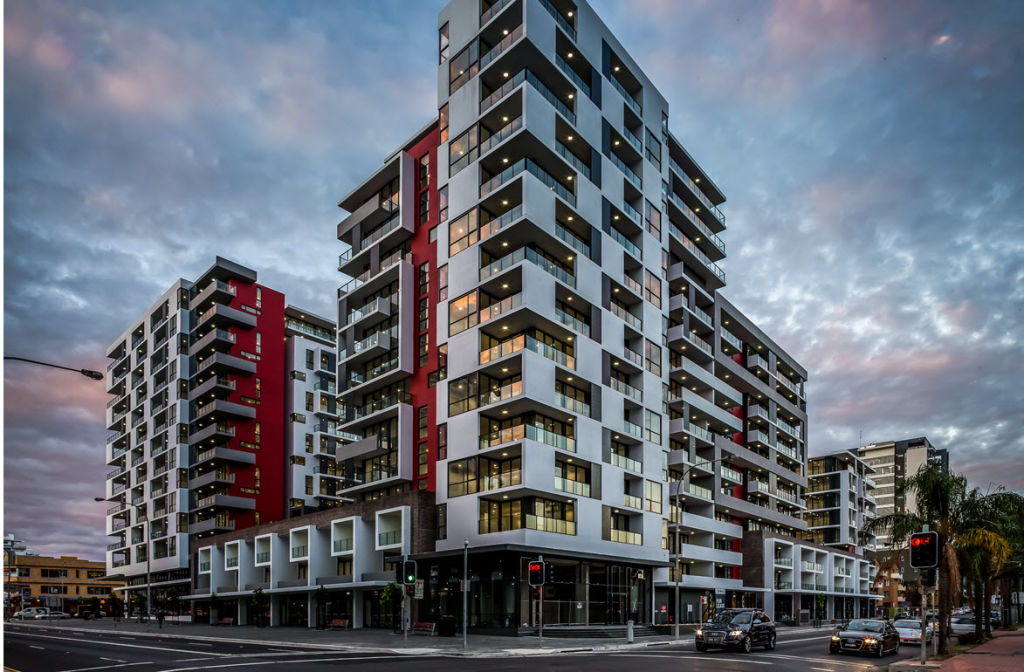There’s been a spike in demand for office and commercial space outside Sydney and Melbourne post-pandemic, driven by companies following people on sea and tree changes.
Regional centres such as Wollongong, Newcastle and the Central Coast in NSW, and Geelong, Bendigo and Ballarat in Victoria have been the big beneficiaries. The pandemic seems not to have driven businesses out of the other capital cities to the same extent.
“We’ve seen a big resurgence of demand for office space in Wollongong during, and after COVID,” said Nicholas El-Khoury, managing director of St Trinity Property Group, which has been leasing new A-grade commercial space in its mixed-use Crown Wollongong development.
“A lot of parties are approaching us and saying they want more space out of the big cities. The area’s competitive pricing and leasing opportunities relative to Sydney, its diverse and dynamic local economy, and appeal as an area in which employees could enjoy a sea change are key factors. For businesses, it represents increasingly appealing alternatives for those looking to streamline costs and retain workers.”
With commercial, office and retail set-up costs estimated at about 30 per cent less than metropolitan areas, there’s been a steady flow of companies to these regional hubs.
Civil engineering and landscape consultancy Indesco recently chose St Trinity’s Crown Street space in Wollongong for a new office.
“We know a lot of people are looking for a coastal lifestyle change,” said Aaron Hazelton, national head structural engineer at Indesco.
“As we’re in property construction and design, we can see the whole market is growing on the coast. We think this is a trend that’ll continue and see Sydney as, long-term, shedding the most. There’s so much traffic and travelling and a lot of people are thinking, ‘What else is there?’”
It’s still too early for any data on the move of businesses from Sydney and Melbourne to the regions, and any increase in demand for office space. But Ben Burston, head of commercial at Knight Frank, said he believed commercial inquiry was following the flow of people seeking lifestyle changes beyond the cities.
“I think there’s clearly evidence of a rise in residential demand out of the cities and in regional lifestyle destinations,” he said. “I wish we had more information on the commercial side. But I hear anecdotally from some of our colleagues in some of our regional cities that interest has increased.”
Commercial real estate agencies have been experiencing a pick-up in the level of inquiry, and demand, from small and large businesses, reports Mathew Tiller, head of commercial research at LJ Hooker.
The small ones are people moving their businesses out of the cities, knowing they can now work remotely, and others setting up their own companies in cheaper regional areas.
The larger companies tend to be logistics and storage companies servicing online retailing. “But there’s also a growing population in the regional areas,” said Mr Tiller, who sees the biggest growth in Wollongong, Newcastle, the Central Coast and Geelong.
“And, like residential, it’s much more affordable to be outside the major cities.”
Bendigo and Ballarat are two other regional cities where there’s now a lot of interest in setting up business, says Damien Sheehan, country head for flexible office space provider IWG.
With its first Australian franchise deal, its brand Regus will be adding another 10 centres of about 1000 square metres each in regional centres such as Townsville, Rockhampton and Noosa, while there’s plenty of inquiry from regional Victoria, too.
“Sydney and Melbourne were impacted the most by COVID, but the other capital cities have been incredibly resilient,” he said.
“We’ve seen strong interest in NSW franchising clusters and opportunities in places like Orange, Wagga and Dubbo too, while in Victoria, there’s demand in Geelong, Bendigo and Ballarat.”
Also in the Geelong area, French clean energy developer Neoen has announced plans to build the world’s largest battery, while at Tullamarine, CSL subsidiary Seqirus is to construct a new $800 million vaccine manufacturing facility.
Tony Crabb, Cushman & Wakefield national director of research, said some companies were moving out to keep pace with staff, and potential workers, who were shifting out of the cities to chase quality lifestyle and more affordable housing options.
Companies’ competition to attract and retain good staff was likely to become even fiercer with the reduction in immigration.
But there were limitations on which types of businesses would be able to move.
“Government has wanted to decentralise for a long time, but they still have to be close to their departments, and financial services probably can’t go to regional areas because of security issues,” said Mr Crabb.
“Professional services companies, however, could certainly devolve. The only issue is that they need to be close to their customers and their competitors, as with comparative isolation they can potentially be left behind. Everything, especially technology, is moving so fast.”
In Wollongong, given everything is so close – including Sydney – Mr El-Khoury believes there’s absolutely no danger of that.
His 25,000 square metres of commercial space is filling up faster than he imagined after the COVID-19-related lockdown. So far, he has Indesco, international insurance brokerage and risk management group Arthur J Gallagher, the Coffee Club and a skin treatment company.
One block from the beach, from WIN Stadium and with on-site parking, it has a great deal of lifestyle appeal for businesses, he says.
“Then we have the competitive price differential,” he said.
“We’re now witnessing the unprecedented reassessment by individuals and businesses of exactly where they need to be based, and if that ‘base’ can actually be shifted away from traditional metropolitan hubs for both improved life and work outcomes.”
